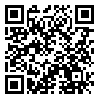BibTeX | RIS | EndNote | Medlars | ProCite | Reference Manager | RefWorks
Send citation to:
URL: http://journal.muq.ac.ir/article-1-421-en.html
2- Islamic Azad Universitry, Lahijan Branch
3- Islamic Azad University, Astara Branch
Background and Objectives: Staphylococcus aureus is one of the important causes of severe infections in hospital and community, and the methicillin-resistant strains (MRSA) of the bacterium have high prevalence and mortality. This study aimed to isolate Actinomycete strains producing antibacterial agents for antibiotic therapy and control of infection spread.
Methods: After sampling from the soils of different regions of Astara city, Starch Casein Agar (SCA) medium was used for isolation and purification of Actinomyces spp. In the next step, investigation of antimicrobial characteristics was done by primary screening via spot inoculation method on 96 isolates. Then, the ISP-2 medium was used for the isolation of Streptomyces at the secondary screening stage, and by determination of the antimicrobial activity against MRSA, the strong isolates in terms of producing antimicrobial agents were selected by well diffusion method and based on the diameter of inhibition zone. In the final step, various biochemical tests, such as sugar tests, urease, citrate consumption, etc. were used to identify the active isolates.
Results: 96 Actinomycetes isolates were isolated from 51 soil samples of different areas of Astara. In primary screening, 9 isolates showed anti-MRSA activity, of which, 3 isolates of AS22, FS38, and AS13 were active in the secondary screening, and showed inhibition zones with the diameters of 28, 17, and 15 mm, respectively.
Conclusion: The results of this research indicated that soils of Astara are rich in active isolates producing antibacterial agents, which needs further investigations.
Received: 2016/03/11 | Accepted: 2016/03/11 | Published: 2016/03/11
| Rights and permissions | |
 |
This work is licensed under a Creative Commons Attribution-NonCommercial 4.0 International License. |







